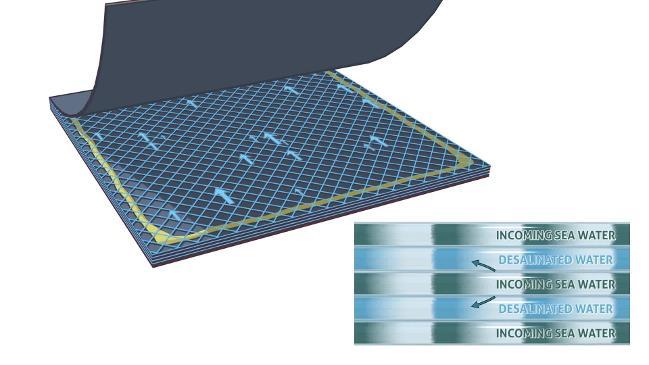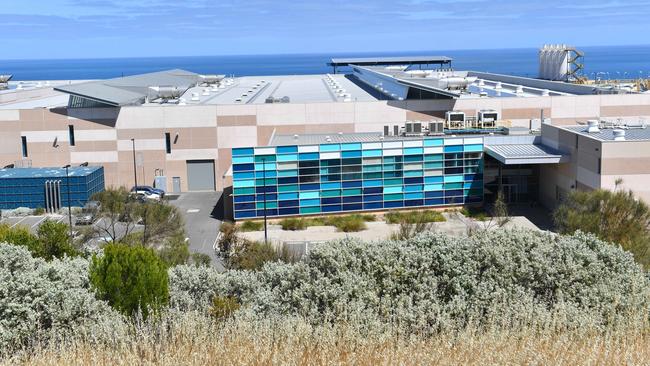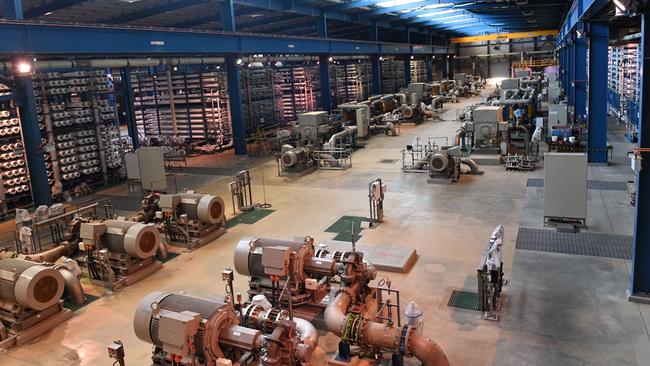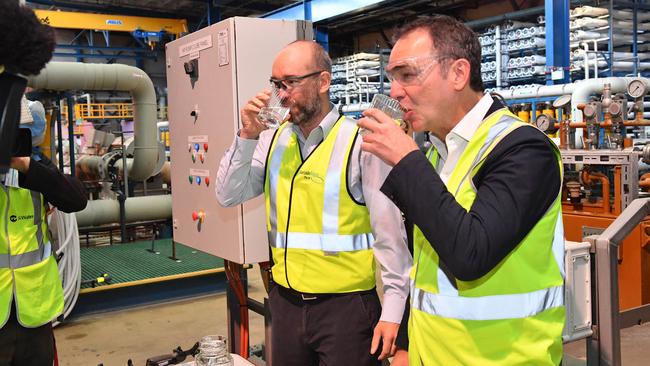SA’s $2.2b desal plant finally fires up for drought relief, as State Government also looks to start selling its water for profit
Desalinated water will be churned out of the Lonsdale plant this week – to help those in need but eventually also turn a profit.

SA News
Don't miss out on the headlines from SA News. Followed categories will be added to My News.
South Australia’s $2.2 billion desal plant will finally fire up on Monday, helping drought-stricken farmers upstream, under a deal that will also let the State Government spin a buck by selling water for profit.
Environment and Water Minister David Speirs has confirmed to The Advertiser that the states on Saturday signed the details of a deal Prime Minister Scott Morrison revealed last month, and an order to push the button at the desal plant will be issued on Monday.
It will crank up to full operation over the week, and at first be used to allow release of water upstream so farmers can grow feed for stock.

However, the four-year agreement then also gives SA the capacity to commercially sell desal water once it has met that promise to farmers. The national water market operates in a similar way to the stock exchange, with buyers and sellers able to make trades.
Mr Speirs said SA could profit when the cost of producing desal water, which was closely linked to the price of power needed to run the energy-hungry plant, was lower than what others would pay to get it.
“It’s very likely that we would ring-fence that profit for environmental or drought-relief projects going forward,” he said.
The new deal was required because federal funding given to help build the plant, which opened in 2013, came with conditions that it only be used in an emergency for critical human needs. When those conditions needed to be changed to add drought relief, the Government also inserted the water trading powers.

Mr Speirs has stressed that all costs from SA “doing our bit” for the drought effort will be met by the Federal Government, and that firing up the desal plant would not increase average household bills. Mr Speirs said that payment to SA for the desal water, estimated to be about $100 million, would also not affect our GST take.
The drought aid deal will result in SA producing 40 billion litres of water between now and next July, with the option of a further 60 billion litres in the following financial year after a full review.
Mr Speirs said the outcome of that review would be announced in April.
“We don’t want to be leaving ourselves without the water security that the desalination plant is there for,” Mr Speirs said. “If we’re in a good place in terms of (water) storages and projected inflows, then we will go ahead.”
Mr Speirs said the new deal would not affect requirements on states to deliver environmental water under the Murray-Darling Basin Plan.
The Government will also closely monitor the operation of the plant as it is effectively tested at high production over a long period for the first time.

